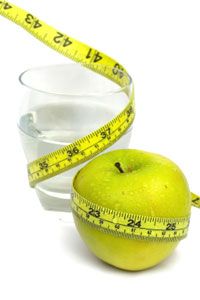A calorie is a unit of energy. We tend to associate calories with food, but they apply to anything containing energy. For example, a gallon (about 4 liters) of gasoline contains about 31,000,000 calories. You could drive a car 22 miles (35 km) on the calories in 217 Big Macs.
Specifically, a calorie is the amount of energy, or heat, it takes to raise the temperature of 1 gram of water by 1 degree Celsius (1.8 degrees Fahrenheit). One calorie is equal to 4.184 joules, a common unit of energy used in the physical sciences.
Advertisement
Most of us think of calories in relation to things we eat and drink, as in "This can of soda has 200 calories." It turns out that the calories listed on a food package are actually kilocalories (1000 calories = 1 kilocalorie). So that can of soda actually has 200,000 calories (but don't worry, the same applies to exercise -- when an exercise chart say you burn 100 calories jogging a mile, it means 100,000 calories). A food "calorie" is sometimes capitalized to show the difference, but usually not.
Human beings need energy to survive -- to breathe, move, pump blood -- and they acquire this energy from food. The number of calories in a food is a measure of how much potential energy that food possesses. A gram of carbohydrates has 4 calories, a gram of protein has 4 calories and a gram of fat has 9 calories. Foods are a compilation of these three building blocks. So if you know how many carbohydrates, fats and proteins are in any given food, you know how many calories, or how much energy, that food contains.
If we look at the nutritional label on the back of a packet of maple-and-brown-sugar oatmeal, we find that it has 160 calories. This means that if we were to pour this oatmeal into a dish, set the oatmeal on fire and get it to burn completely, the reaction would produce 160 kilocalories (remember: food calories are kilocalories) -- enough energy to raise the temperature of 160 kilograms of water by 1 degree Celsius. If we look closer at the nutritional label, we see that our oatmeal has 2 grams of fat, 4 grams of protein and 32 grams of carbohydrates, producing a total of 162 calories. Of these 162 calories, 18 come from fat (9 cal x 2 g), 16 come from protein (4 cal x 4 g) and 128 come from carbohydrates (4 cal x 32 g).
Our bodies "burn" the calories in the oatmeal through metabolic processes, by which enzymes break the carbohydrates into glucose and other sugars, the fats into glycerol and fatty acids and the proteins into amino acids (see How Food Works for details). These molecules are then transported through the bloodstream to the cells, where they are either absorbed for immediate use or are sent on to the final stage of metabolism, in which they are reacted with oxygen to release their stored energy.
Advertisement


